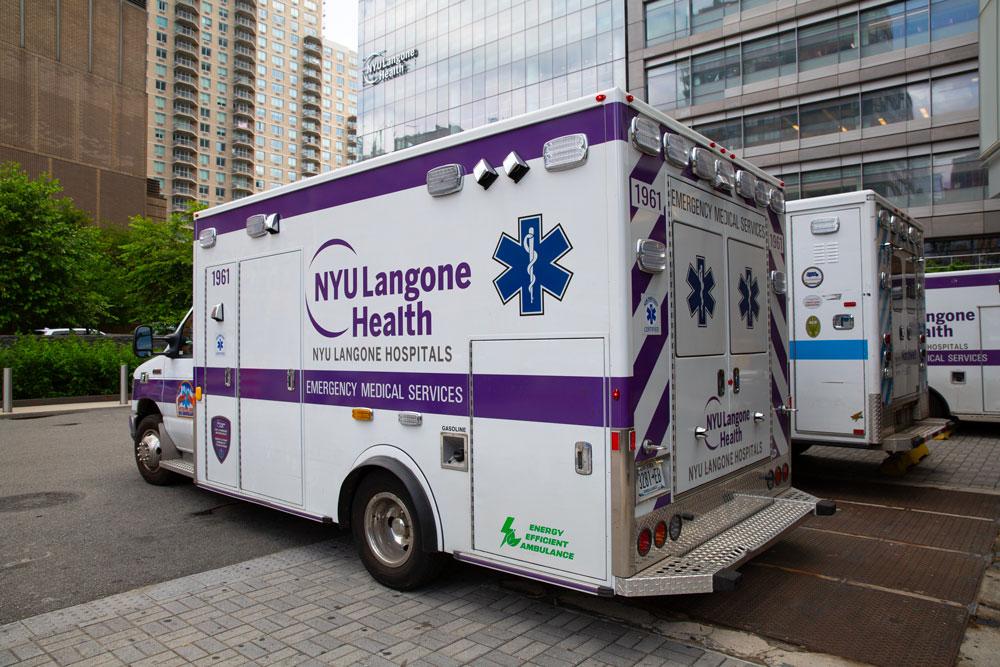On the Manhattan main campus, over 23,000 square feet of green roofs help with stormwater management and building insulation while also providing beautiful views of nature.
Credit: NYU Langone Staff
Every five minutes across NYU Langone Health’s 11 major facilities, 20,600 digital sensors take the pulse of an institution working to solve healthcare’s painful paradox: the mission to heal often comes with an environmental cost. Healthcare in the United States generates 8.5 percent of the nation’s greenhouse gas emissions, with hospitals as the biggest contributors. Most hospitals don’t track these emissions or their waste production, leaving the industry without standard benchmarks for environmental performance. NYU Langone is changing that pattern with their most detailed sustainability report to date.
The new report unveils their most ambitious climate initiative yet—and the details are striking. Through smart energy performance monitoring and alarming that transforms raw data into action, NYU Langone’s network of sensors analyze everything from temperature fluctuations to microscopic changes in air quality, with more than 11,000 data points tracking multiple metrics, including flow setpoint adherence and zone temperature maintenance. These digital sentinels route their findings to specialists in building controls, who use an alarm triage system to review the data and schedule repairs. Last year alone, this vigilance identified 4,944 actionable items, representing an estimated annual savings opportunity of $64,000.
“At NYU Langone Health, we don’t shy away from data,” says Paul Schwabacher, senior vice president of facilities management for the Real Estate Development and Facilities department (RED+F), which has developed and oversees NYU Langone’s sustainability initiative in collaboration with other departments across the health system. “The exciting part is that every time we dig deeper, we find new opportunities. It’s like turning over rocks—there’s always something potentially unexpected underneath. Yes, the scale of what needs to be done is enormous, but that’s actually encouraging, because it means we have so many chances to make things better.”
This obsession with measurement has revealed climate solutions hiding in plain sight. In the operating rooms, leadership in the anesthesiology department examined their environmental footprint and took decisive action. Eliminating desflurane, an anesthetic gas with the highest global-warming potential, and moving away from nitrous oxide’s centralized distribution system to e-cylinders have proven so effective that plans are underway to expand these initiatives throughout the health system. The nitrous oxide strategy alone reduces associated greenhouse gas emissions by 87 to 99 percent.
The impact extends beyond hospital walls. NYU Langone’s fleet of 38 ambulances, responding to 98,000 calls and serving 65,000 patients annually, is undergoing its own transformation. Traditional ambulances ran 24/7 using gasoline and diesel to preserve lifesaving medications and operate equipment. Now, with $3 million in federal and city grants, the fleet includes two new hyperefficient ambulances equipped with lithium-ion batteries that power essential services while reducing engine idling. Five more such vehicles are planned as existing ones reach retirement.
Inside the facilities, a pioneering program for medical device reprocessing discovered value in what others might consider waste. Through FDA-regulated sterilization and reuse, the program saved 111,735 pounds of trocars, pulse oximeters, and other single-use devices—from landfills in 2023 alone.
The results challenge the fundamental assumption in healthcare that environmental responsibility must compete with patient care. Since 2008, driven by the efforts and direction of RED+F’s Energy and Sustainability team, the hospital system has achieved $76 million in net energy savings, with a 112 percent return on investment. It has reduced greenhouse gas emissions from direct sources and purchased energy (i.e., scope 1 and 2 emissions) by 16 percent since 2021, despite a 24 percent increase in overall square footage. Its latest facility, the Joseph S. & Diane H. Steinberg Ambulatory Care Center—Cobble Hill, in Brooklyn, uses 38 percent less water and 28 percent less energy than conventional buildings.
“I see patient care and sustainability as completely compatible,” says Schwabacher. “If our systems are working optimally, they’re both achieving the best energy performance and therefore the best sustainable performance and also creating the safest and healthiest environment at the same time.”
NYU Langone’s achievements come at a crucial moment. Climate Week NYC has added health as a program theme. Credit-rating agencies now examine hospitals’ environmental efforts. The United Nations Climate Change Conference ranks human health as a priority issue. Yet most of the country’s 6,000 hospitals haven’t begun tracking their environmental impact.
“We are locked into a certain amount of climate change,” notes Jenna Agins, NYU Langone’s energy and sustainability assistant director. “These changes are permanent and real. We have to adapt if we want to remain a world-class medical center caring for future generations.”
Media Inquiries
Arielle Sklar
Phone: 646-960-2696
Arielle.Sklar@NYULangone.org


